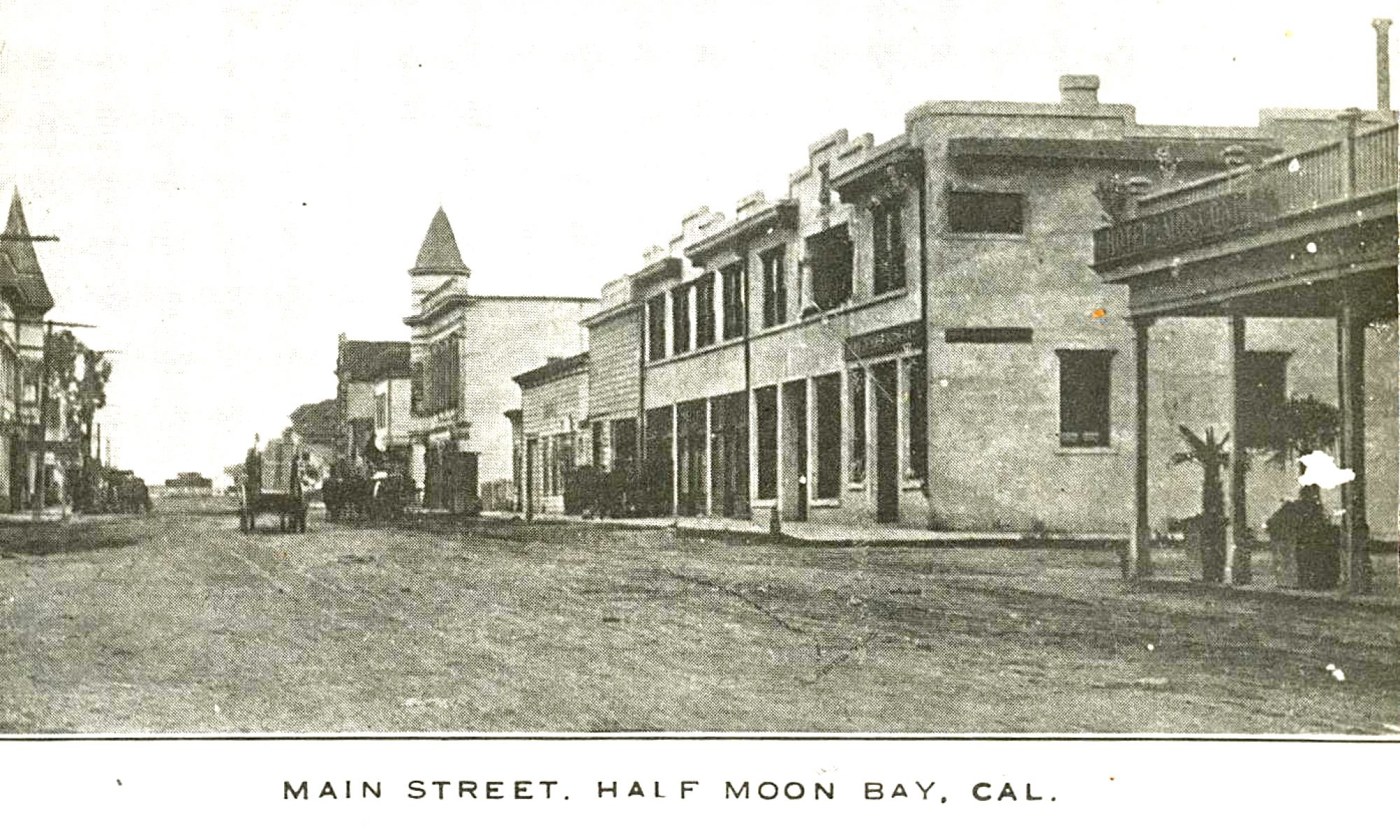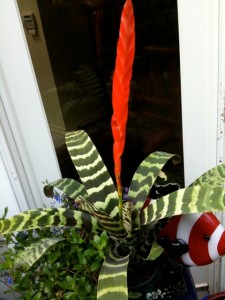
Matt Damon Stars in “The Informant!” and I Saw the Movie
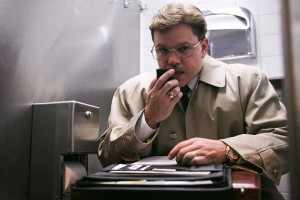
[Image above: Matt Damon as Mark Whitacre, in “The Informant!,” the youngest President of Archer Daniels Midland BioProducts Division,1989-95.]
Movie Review by June Morrall
I’ve been trying to crack the secret, psychological meaning of this movie. The “!” in the title says that there is something wrong with this Informant!. But where’s the “tell?”Is it because he can do two things at once? A “no-no” for a male who’s not supposed to multi-task? I’ll venture a little further out there, to the edge of the cracking cliff: Was The Informant! a chemically altered man? Does that even make sense?
In this very funny movie, giving detail-hungry watchers the kind of humor you might need an acquired taste for, that is, it’s not going to make everybody laugh out loud like it did me: Matt Damon carries the entire picture. (DETAIL!: The scenes take place in Ohio and in every high-level office there is a bust of President Lincoln, whose home state it was. You can’t miss them!)
This is a complicated script, moving at different levels, with A LOT of WORDS for a made-in-America movie, and Damon works it deftly, including his strategically placed, tight voice-overs.. He owns more cars than I can remember, driving a different cool model every time he’s on camera. The last one was an old gas hog which confused me completely after seeing beamers and mercs and a beautiful Porsch(e) or is it Porsch(a)? He knows he wears a more fashionable, authentic-looking hairpiece and hipper ties than does FBI Agent Shepherd, who convinces the multi-lingual, moral, but prone-to-lie Whitacre to wear a wire and tape international meetings where top level businessmen agree to fix the price of lysine–an amino acid that can make shrimp grow larger faster. SO THERE! The film is based on a true story directed by Steven Soderbergh.
Eric von Neff: How to Beat the Gatto Brothers
To read author Eric von Neff’s story: How to Beat the Gatto Brothers, please click here
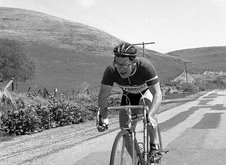
1890s: A Moss Beach Story: Mr. Wienke and Captain Lovdal
1890s: A Moss Beach Story

Mr. Wienke & Captain Lovdal (Part I)
By June Morrall
Jurgen Wienke lay awake, staring at the ceiling while his wife, Meta, a relative of the “Sugar King” Claus Spreckels, dozed peacefully nearby. Wienke, who built the Moss Beach Hotel, overlooking the deep blues and muted grays of the Pacific Ocean, reflected on recent happenings at his popular resort in the 1890s.
Now, famous scientists arrived to study the remarkable marine plant life thriving in the reefs. Recently David Starr Jordan, Stanford University’s first president, signed the hotel’s guest register. Wienke, who had been crowned the “Mayor of Moss Beach,” glowed inside. He felt he had reached the pinnacle of success when prominent visitors braved a twisting mountain road to reach his decade-old resort on the cliffs.
As “Mayor” Wienke contemplated the long hours of dedicated work, he thought he heard gunfire above the sound of crashing waves. In a split-second, his mind returned to the here and now as he listened carefully. A ship’s horn blew in the distance. His sense of duty aroused, Jurgen bolted out of bed. Without further disturbing Meta, he changed his apparel, tip-toed past daughter Lizzie’s room and through the front door without waking up the overnight guests.
Outside dawn was breaking through a heavy veil of fog; unfamiliar sounds accompanied the first eerie light. Something was wrong. As he stood among the thousands of cypress he had planted and nourished through long periods of drought, Wienke listened for clues.
While submerged in deep concentration, the repeated sound of a ship’s horn jarred Wienke’s nerves. He glanced out to sea but the thick fog concealed anything that might be there. The horn called out again. This time he mounted his horse and rode in the direction of the sound.
He rode as far north at the Point Montara Fog Station where he saw several people rushing toward the beach. Wienke recognized David Splain, the fog signal’s caretaker, and his daughter. He called out to Splain, who motioned for Jurgen Wienke to follow.
Wienke hitched his horse and rushed to catch up.
Version:1.0 StartHTML:0000000199 EndHTML:0000007429 StartFragment:0000002392 EndFragment:0000007393 SourceURL:file://localhost/Users/junemorrall/Desktop/Mr%20Wienke%20&%20Capt%20Lovdal.doc
Splain excitedly informed Wienke that an unknown ship had struck the jagged reefs, the third vessel to do so in recent times. No surprise. Many sailors believed Point Montara to be a dangerous part of the coast. At that moment the fog lifted just enough for the two men to see the hazy outline of a schooner stranded on the rocks.
Splain and Wienke launched a small boat into the breakers, and as they rowed against the thunderous surf, the ship’s captain appeared on the wet deck. He identified himself as Captain George C. Lovdal and asked for his location. Wienke shouted back “Point Montara,” and a look of astonishment appeared on Capt. Lovdal’s face.
As sun tried to burn through the fog, Lovdal used a block of wood to float a line ashore. With a running block and tackle, he shipped off his men and their luggage toward dry land. By noon the shipwrecked crew stood on the cliffs wringing dry their soaked-through clothing. Scores of spectators, many of them fashionably dressed, stood in thick clusters on the beach watching the rogue waves crash over the ship’s bow. In the afternoon, when the tide was low, a few brave souls tried to wade through the tough surf to reach the vessel.
Captain Lovdal viewed the disaster from the safety of the sandy shoreline. He inspected the crop of splintered boards and timbers, freshly tossed from the sea, which now littered the broad beach. The captain voiced little hope for the valuable cargo of lumber, his ship, the “Argonaut,” was scheduled to deliver to San Francisco.
Head lowered, Lovdal slowly walked back toward the cliffs. A local reporter stopped him and asked for the details leading up to the unfortunate wreck. Yes, he had heard Montara’s fog signal but he had to tell his story from the beginning to explain what had occurred.
The “Argonaut,” Lovdal said, left Coos Bay a week earlier bound for San Francisco with 200,000 feet of lumber and five ship’s spars.
But—he added ominously—a heavy blanket of thick, dark fog had trailed them during the entire voyage. Still, the “Argonaut” reached Point Reyes on schedule. From there, Capt. Lovdal ran smack into a powerful southerly current apparently sweeping the ship nearly 20 miles off course.
When Lovdal heard the fog signal he believed he was near Point Bonita, explaining why he was astonished to hear Wienke shout he had struck the reefs at Pt. Montara. In survival mode, the crew rushed to the bow where they encountered the intimidating breakers. There was nothing to be done but watch helplessly as the “Argonaut” smashed into the reefs where they remained stranded.
That was the story Captain Lovdal told the reporter, and before riding off with him to Half Moon Bay where he telegraphed the “Argonaut’s” owners, Lovdal sent his crew to stay at Mr. Wienke’s homey hotel.
The wreck was huge news in Half Moon Bay where the Captain was invited to attend the Methodist Ladies Election Supper that evening. Captain Lovdal entertained the guests with stories of having been shipwrecked half a dozen times before—but never before, he emphasized, had he been cast among so many fine people, such beautiful women and delicious food.
Crew and captain slept peacefully at Wienke’s Moss Beach Hotel but the next day a tug failed to free the stranded “Argonaut.” Left with no other alternatives, the owners auctioned the remains to the highest bidder. Soon wreckers arrived to salvage the cargo, sails and rigging. Few locals believed there would be much of a profit because the wreckers had employed so many men, and at such high wages and the heavy seas continued to interrupt work.
During the lengthy salvage operations, Captain Lovdal stood on the windy bluffs with Mr. Wienke discussing the short distance between the fog whistle at San Francisco’s Point Bonita and the Coastside’s Pont Montara.
Anybody could easily mistake one for the other, Mayor Wienke said.
Creaturemag.com
South of HMB: The Rocks
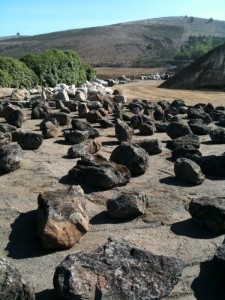

Elias sang opera tunes to the customers when he worked at Nurseryman’s Exchange on Hwy 1
He’s still singing but you’ll have to catch him when he’s working in his El Granada garden.
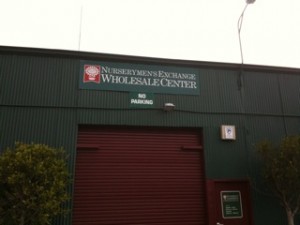
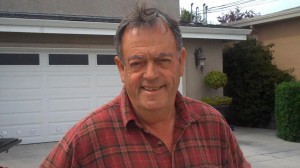
Agave Expert Sydney Nahay lived on Vallejo Street in El Granada
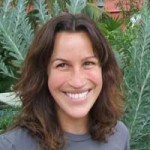 I met agave expert Sydney Nahay today at Flora Grubb Gardens in San Francisco. She told me she knew El Granada well; she lived on Vallejo Street for a few years. “It was an easy walk to the beach,” she added.
I met agave expert Sydney Nahay today at Flora Grubb Gardens in San Francisco. She told me she knew El Granada well; she lived on Vallejo Street for a few years. “It was an easy walk to the beach,” she added.
Sydney presented a talk on how to “Grow Stunning Agaves” on Sunday, September 20 at 10:30 a.m. at Flora Grubb Gardens, 1634 Jerrold Street, San Francisco. In San Francisco, Flora Grubb sets the standard.
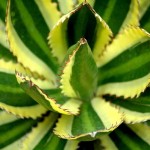
Dave Cresson: The Coastside: A Gallery Opens Oct 1
The Coastside: a gallery
330 Main Street
Half Moon Bay, California 94019
(650) 726-4460
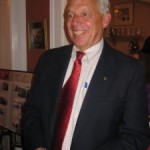 Dear Friends,
Dear Friends,
We are celebrating the opening of our new gallery. Please come share a glass of wine and hors d’oeuvres with the artists we are proud to show.
The date is Thursday, October 1, from about 5:30.
We do look forward to seeing you and celebrating the treasures that these talented people bring to our community.
Best regards,
Dave Cresson,
The Coastside
View invitation:
 |
Coastside Gallery Grand Opening.pdf 4108K View as HTML Download |
We asked afficianado Angelo Misthos: Is Mrs. Sousa standing in front of an Ocean Shore train?
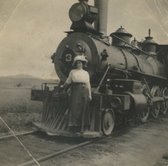

We asked Angelo Misthos:
June , don’t think me presumptious. I’m responding to the email you sent John [Vonderlin]. Cowcatcher–the common term–seems inappropriate here; proper term is pilot.
